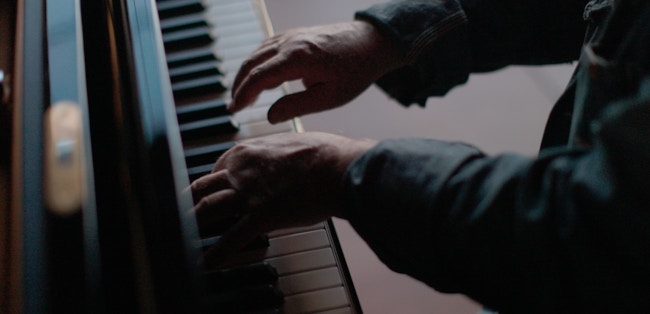Piano Maker
Gnarls and boles, whatever woodwork words
Can turn or blur to use, to glue, to growth
Of board or bed, I know: I use their surds
And darkened boughs like fingers, so that both
Our hands are heard together on the keyboard
Bark; no sounds but branches rise
To leaf through breezes in the scattered cord
Of sheaves and limbs, inking in the dyes,
The ivories of silence on the evening's rose
And shade; twisting up the wires of a day's
Old sun and funneling the body's splay
Of music into crowns of maple and god knows,
I wind up nature's miniature keys
To play out, on a bed of vines,
The tune of my own trees.
Explanation
Walking through the woods one day, it came to me that no long hilltop views were necessary to encompass the world: one small enclosed valley had everything you needed to create a worldview.
We all use the odd leaf or branch as inspiration for a poem, or to start a fire; Buckminster Fuller told the critic Hugh Kenner that fire is simply soaked-up sunlight unwinding from a log.
Woods sometimes point us in similarly luminous directions. We sculpt pianos out of a cord of wood, as Michelangelo unearthed the body of his David in a chunk of Carrara marble. As the Duke says in As You Like It, we find sermons in stones. We derive our own identity as Americans from the land, the way the mythic giants drew their strength from touching the earth (as any mountaineer will understand).
Sound board, key bed, chord and cord, ebony dies, key ivories, maple sounding-board crowns, and glue here mix with human limbs, fingers, bed and board, growth and sound, to deepen the collusion of tree body and human body, piano wood and forest wood, body shape and piano shape, piano maker and poem maker, so that the hands of both types of creators are heard together on the bark of the keyboard and the keyboard of the bark.
Since the advent of the “well-tempered” tuning system, harmony has been as organized as a trellis, using logarithmic surds to structure notes. This poem is an ordered sonnet as well, but, when read, the more conversational mid-rhymes and meters dominate the classicism of the form, as a person or a pianist tries to rise beyond even the most complex structures in nature or in music.
Credits
Directed by Matthew Thompson.
"Piano Maker" by Peter Halstead from Face Your Dreams.
